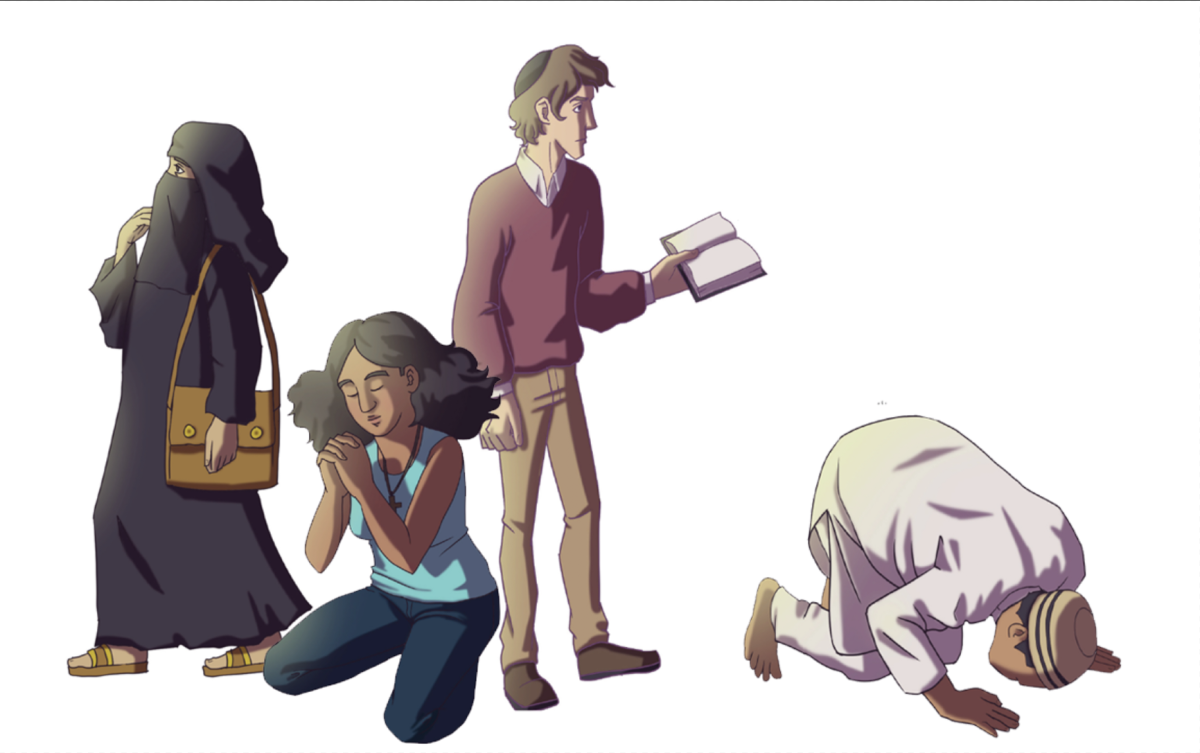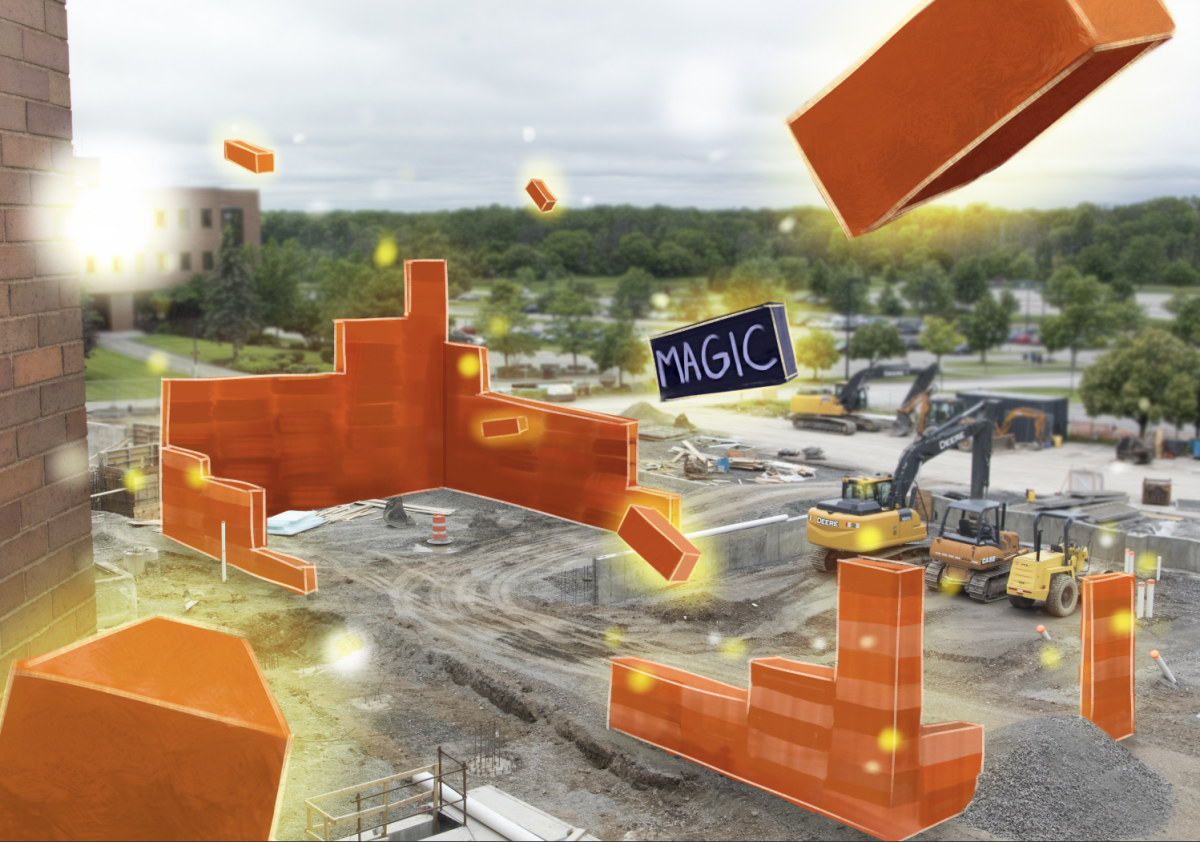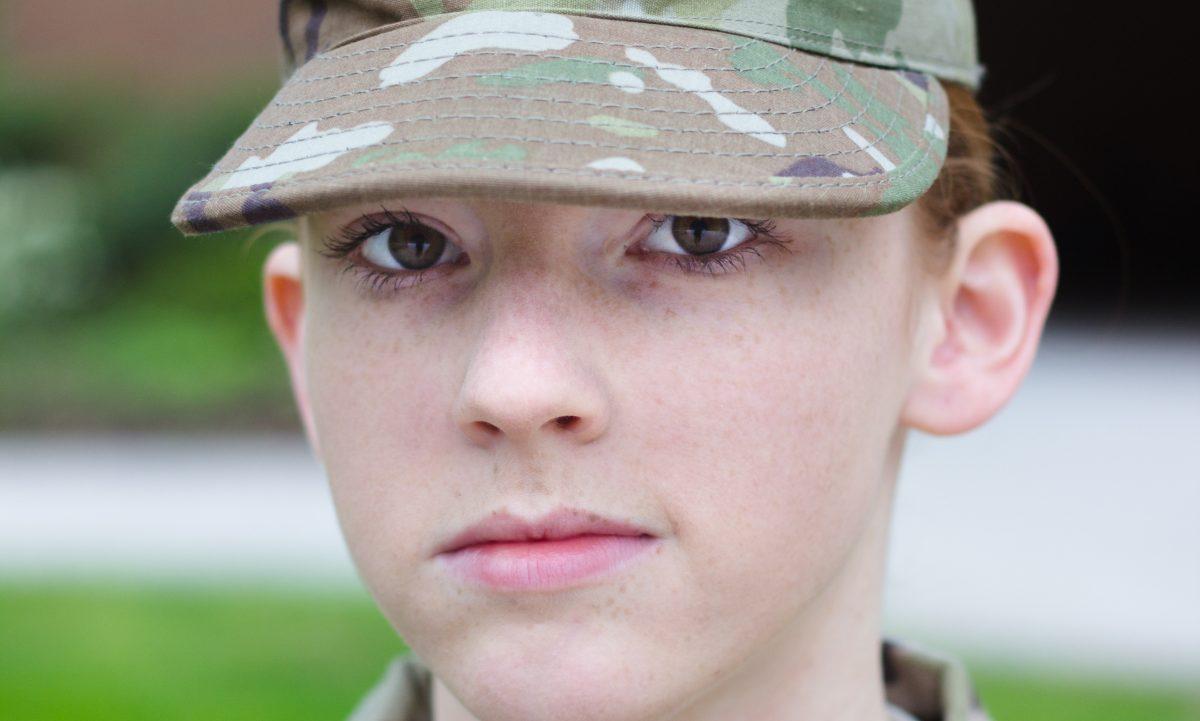Religion or science. More often than not, these two worlds are pitted against each other as battling entities. At a technological college, this contrast can sometimes feel even more contentious.
Nevertheless, with ten different faith communities represented at the Center for Religious Life (CRL), RIT is undeniably religiously vibrant and diverse. While all faiths have different sets of governing rules, customs and beliefs, the religious groups on campus all share a common goal of promoting conversations about spirituality.
A Place for Discussion
Nora Chernov, a 2017 Political Science graduate, was able to engage in fascinating discussions through her involvement in religious life. A member of Hillel since her first week at RIT and its president for several years afterward, Chernov appreciated the opportunity to meet other students who valued Judaism, but whose upbringing was not necessarily the same as her own.
“I think the advantage of Hillel is that it isn’t a group of people with the same experience,” Chernov said. “It’s a group of people who have an experience that gets you in the door, and then those different experiences enrich everything.”
Recently, the Interfaith Varsity program was established in order to facilitate conversation between faith groups as well. Along with Chernov, third year Imaging Science major Beth Bogart and several others have been working hard to encourage safe spaces for honest dialogues.
According to Bogart, these discussions are absolutely necessary. “Definitely after coming to college it was obvious that people grew up in their own little bubbles. No one was talking to each other,” she said. “So that’s why we need a solid basis of ‘oh, this is why we’re all here — it’s to spread love and be kind to each other.’”
Although the program is still in its fledgling stages, Bogart is excited for what the next couple of years could hold in store. “We’re still kind of getting the hang of it,” she said. “We’re planning to do some outreach next year and keep the conversation going.”
Adeel Ahmed, a first year Microelectronic Engineering PhD student and former vice president of the Muslim Student Association (MSA), has also been actively engaged with Interfaith Varsity. Ahmed believed it was of paramount importance that the MSA be represented in these dialogues — in fact, he sees it as the club’s responsibility to promote better understanding about Islam.
“We try to welcome people, and have a conversation with them,” Ahmed explained. “We’re very big into reaching out to those who disagree with us and actively hate us.”
So far, CRL Muslim Chaplain Rauf Bawany has found the club’s outreach efforts successful in clearing up misconceptions about the religion. “Our girls are often told ‘you look repressed in this attire.’ And when they are able to answer and tell them how they feel, people are satisfied,” he said.
That being said, some may recall that last year the MSA’s mural in the residential tunnels was cruelly vandalized.
“It was unexpected,” Ahmed said. “But it only takes a certain situation to bring out the worst in people, and the last couple months have been conducive to inhospitable behavior to certain communities.”
Overall, Ahmed still feels that RIT is a welcoming place. “For the most part, the campus has been very accepting of us,” he said. “But there are those people out there, and you can’t live in denial.”
“We want to create a space where people can talk about these issues freely.”
If anything, last year’s incident only heightened the need for discussion, said Ahmed. “We feel that if we don’t talk about these issues or sensitive topics, the emotions are just going to bottle up and never come out,” he explained. “We want to create a space where people can talk about these issues freely.”
Continuing the Conversation
Alice Nation, chaplain of RIT’s Newman Catholic Community, agreed with Ahmed: conversations about religion must continue, no matter the circumstances. “I think the more we do as a campus community in understanding religious and ethnic backgrounds, the better off our students are going to be,” she said.
The easiest way to better understand different faiths? “As I like to say with all communities, get to know them, so it stops being us and them,” suggested Nation.
Zach Hanje, RIT’s Cru (a Christian group) chaplain, recommended the CRL as another resource for students who are interested in learning about different religions. “We’ve got all sorts of faith traditions represented here,” he said. “All of us together, all of us chaplains, we hope that this is a place where students can be a spiritual resource. Most of us chaplains here you can step in and chat with.”
“It goes beyond tolerance — it is a level of acceptance of each other, an understanding that we are what we are, and you are what you are.”
Bawany concurred — the CRL strives to be an open, friendly place. “We talk with each other, we sit with each other, we learn from each other,” he said. “It goes beyond tolerance — it is a level of acceptance of each other, an understanding that we are what we are, and you are what you are.”
Ultimately, RIT is in the business of giving students an education. Nation strongly believes that this education should include a fundamental understanding of religious differences.
“We don’t prepare students to just get good grades. The bigger picture here is to prepare our students and integrate them into the world.”
“We don’t prepare students to just get good grades. The bigger picture here is to prepare our students and integrate them into the world,” she said. “Many students are not going to a job where they’ll be working with like-minded people. We have to understand one another’s traditions and background so we can be respectful … I think it’s the basic curriculum of who we need to be as a community.”







